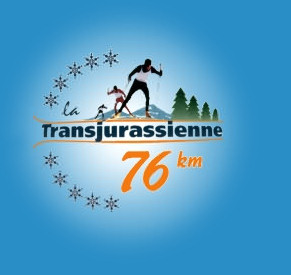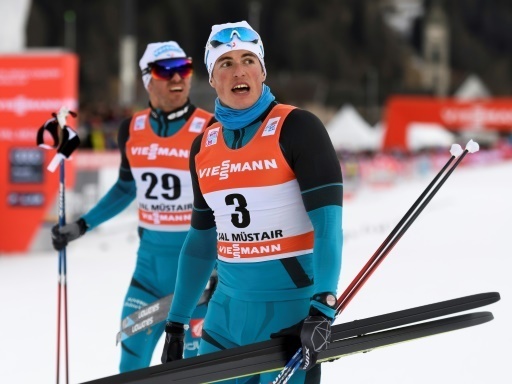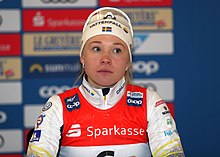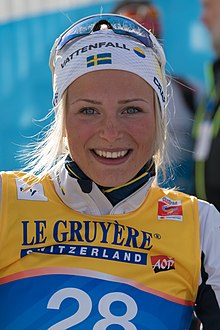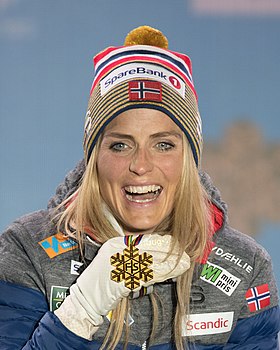| Happy Birthday : |

Binding
A mechanical device that attaches the ski boot to the ski.
Camber
The curvature in the base of a ski. The amount of camber needed is based on the weight of the skier.
Classic Technique
Athletes use a forward stride in which both skis stay parallel to each other.
Corduroy
A term to describe the small ridges in the snow left behind by a grooming machine.
Cork
A piece of cork, hard foam or plastic used to smooth grip wax.
Diagonal Stride
A classic ski technique in which the poles are planted alternately on the opposite side to the kick while maintaining a forward lean with the torso.
Double Poling
A technique typically used on slightly downhill and flat sections. Double poling involves reaching ahead with both arms, planting both poles simultaneously, and pulling through with both arms while keeping legs relaxed. Sometimes a kick is added.
Free or Freestyle Technique
A technique resembling a skating stride, freestyle technique involves pushing one ski outward with the ski angled so that the inner edge is driven against the snow. Transferring weight completely from one ski to the next is essential. Poles are planted simultaneously using a double pole motion. Also called skate skiing.
Grip Wax
Grip wax is used on the middle of the underside of the classical skis to increase friction. Also known as kick wax, it increases the friction between the skis and snow to improve traction. Various waxes are chosen based on weather and snow conditions.
Glide Wax
Wax used to decrease the friction between the skis and the snow. It is applied to the entire free technique ski, but only to the front and rear tips of classic skis.
Glide Zone
The tip and tail of a classic ski, not including the grip wax area.
Herringbone
The herringbone is primarily an uphill walking technique used by beginners where the skis are spread in an open V position.
Iron
Device used to melt glide wax into the pores of the ski base.
Kick Wax
See grip wax.
Kick Zone
Middle area of the ski base where grip (kick) wax is applied.
Klister
A glue-like substance applied to the ski’s kick zone when skiing on very old, icy or warm snow.
Loppet
A cross-country ski race.
Mass Start
In a mass start event, competitors start simultaneously, lined up in rows. The first competitor to cross the finish line wins the race.
Nordic Skiing
Another term for cross-country skiing.
Interval Start
Competitors start at intervals of 30 or 15 seconds, depending on the event. The athlete with the fastest individual time wins.
Relay
The relay event consists of a team of four athletes, each of whom skis a leg of the race and then tags off to a teammate.
Sprint Events
Sprint events begin with individual time trials on a course, with the athletes starting in 15-second intervals. The fastest 30 athletes move on to the quarter-final with five elimination heats of six athletes each. The top two finishers in each quarterfinal and the two fastest runners-up advance to the two semifinals of six athletes each. The top two finishers in each semifinal heat and the two fastest runners up in from all semifinal heats advance to the A final of six athletes; the remaining six athletes compete in the B final.
Team Sprint Event
The team sprint event consists of semifinal and final rounds. In each semifinal heat, there are usually 10 or 11 teams consisting of two athletes (A and B) who perform a relay exchange to each other three times (A, B, A, B, A, B). The final round consists of one heat of 10 teams (the top five ranked teams from each semifinal heat).
Pursuit Technique Event
The pursuit technique event has a mass start and athletes use both cross-country techniques within the same race. At the halfway mark of the race, the athletes change equipment, switching from classical to free technique.
Pole
Made of a lightweight material and used by cross-country skiers for forward propulsion, a pole is a long, narrow cylinder with a spike at the bottom end to provide a fixed pivot as it penetrates the snow. A plastic disc (basket) is affixed above the spike to prevent the pole from sinking too deeply.
Scramble Leg
The first leg of a relay race, so named because of the scramble that ensues during a mass start.
Skate Skiing
See free technique.
Wax Technician
An expert in applying the proper wax or treatment to cross-country skis.
Copyright Sportquick/Promedi




.jpg)

.jpg)
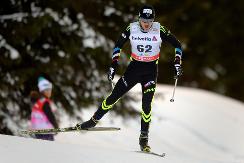
(15).jpg)
